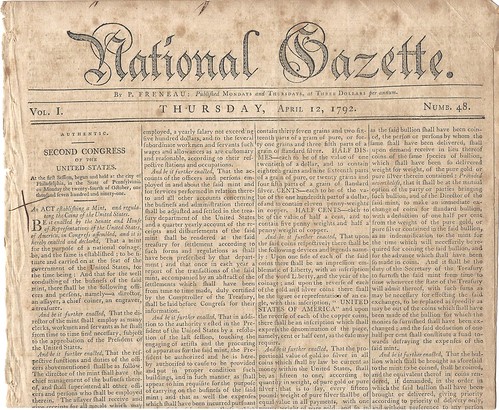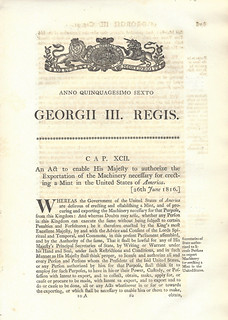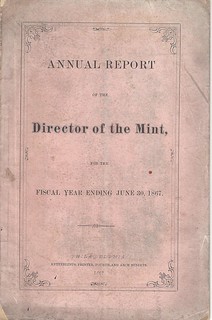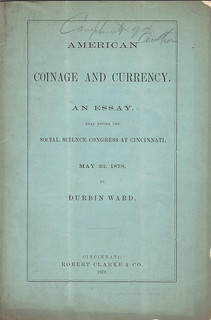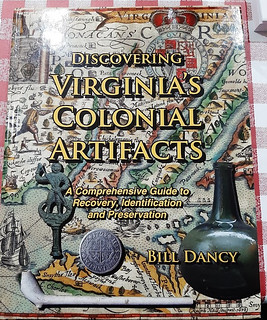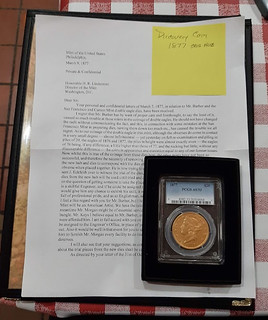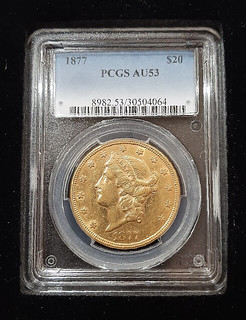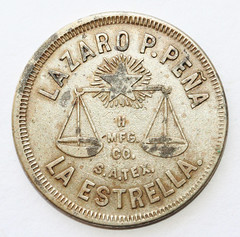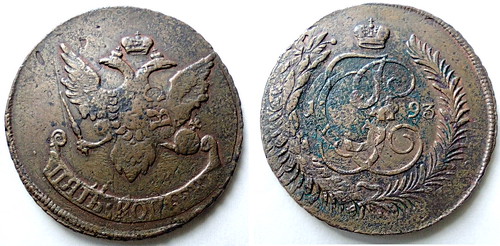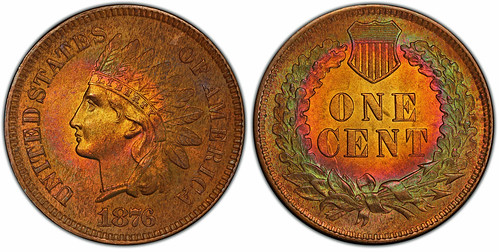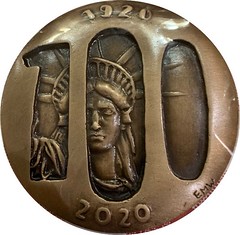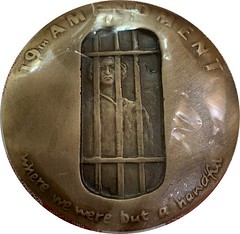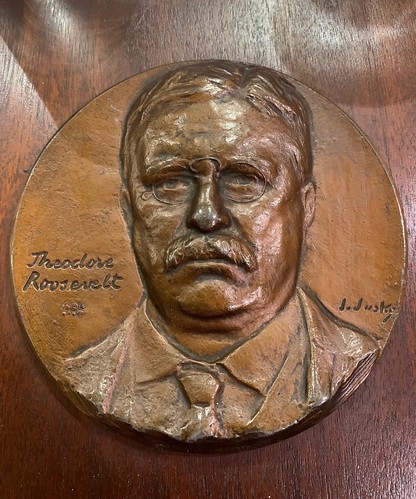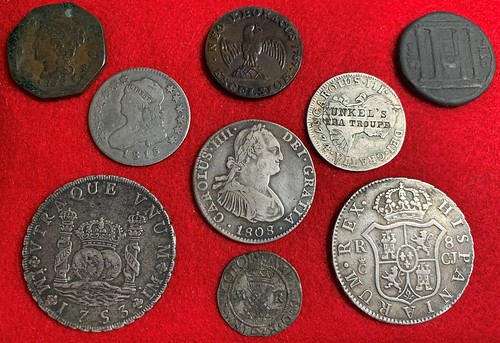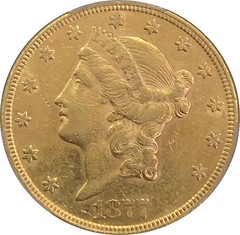
PREV ARTICLE
NEXT ARTICLE
FULL ISSUE
PREV FULL ISSUE
V25 2022 INDEX E-SYLUM ARCHIVE WAYNE'S NUMISMATIC DIARY: JULY 24, 2022Mike Packard was the host for the July 19, 2022 dinner of my Northern Virginia Numismatic Social group Nummis Nova. He'd made reservations at The Esposito's in Fairfax, a nice little Italian restaurant we'd visited several times before. I saw Robert Hoppensteadt in the parking lot. After texting my wife I headed inside where a group of tables in our usual corner was waiting. In addition to myself, Mike and Robert, the night's attendees included members Daryl Haynor, Roger Burdette, Steve Bishop, Dave Schenkman, Eric Schena, Jon Radel, Tom Kays, Julian Leidman and my guest, 16-year-old Jonas Denenberg. Jonas is a member of the Fairfax Coin Club and already a busy coin dealer traveling to shows all across the country. I hadn't seen Jonas since his latest growth spurt, and he towered over me at six feet plus. We sat together at an end of the table near Mike and Roger. Here's my photo of the group. Clockwise from left: Jonas Denenberg, Mike Packard, Robert Hoppensteadt, Eric Schena. Dave Schenkman, Julian Leidman, Daryl Haynor, Tom Kays, Jon Radel, Steve Bishop, and Roger Burdette.
Numismatic Ephemera Here's a printing of a 1816 Act to Enable His Majesty to authorize the Exportation of the Machinery necessary for erecting a Mint in the United States of America, and an 1817 Report of the Director of the Mint. Here's an 1867 Report of the Director of the Mint and an 1878 essay on American Coinage and Currency by Durbin Ward.
To read the earlier E-Sylum article, see:
1877 Double Eagle Discovery Coin Unusual Denominations Dave Schenkman passed around a couple of fascinating items with unusual denominations. Dave writes: "During the 1830s Glenn Springs, South Carolina was well known for its healing mineral springs. Osmyn B. Irvine, who issued the note, was a physician who probably was involved in the spa. 37 1/2 cents (three bits) is a scarce denomination, and with it expressed in Roman numerals it is even scarcer." Dave writes: "The token is from Peña Station, Texas. It was issued by Lazaro P. Peña, a merchant who owned nearly two thousand acres of land in the area. The token is 21mm and struck in copper-nickel. It was struck by the Heidemann Manufacturing Company, a well-known San Antonio die sinking firm that was responsible for many of the attractive Texas saloon tokens issued during the late nineteenth century." Two unusual and rarely seen pieces - reason alone to attend these events, but as usual, there's more.
Steve's Latest Acquisitions Steve Bishop writes: "In addition to a Roosevelt plaque, I brought a couple of Russian 5 kopeck pieces from Paul's reoverstriking program of 1797. Most of these were dated 1793, even though they were struck in 1797 over 1796 10 kopeck pieces of the Cipher series of Catherine the Great. The Cipher series was Catherine's attempt to change the monetary standard so that a 5 kopeck piece became a 10 kopeck piece. After Catherine's death, her successor, Paul I, reversed the decision and recoined most of the Cipher series back according to the original monetary standard. He dated them 1793 in order to blame the failed attempt on Catherine. As a result, original strikings of the Cipher series are very rare. "The two pieces I brought are both dated 1793, with one having the mintmark EM (Ekaterinberg), and the other bearing no mintmark. The EM variety is scarce, but the most plentiful of the 5 kopeck reoverstrikings. The one lacking a mintmark, however, is another story. This variety was struck at Moscow/Nizhny Novgorad. The Grand Duke Michaelovitch, the owner of the largest collection of Russian coinage, now in the Hermitage Museum, knew of only two examples. If genuine (not one in which the mintmark has been removed), this would be the third known example."
Tom's Notes from the Far end of the Table
Nummis Nova Dinner of July 2022
Notes from the far end of the Table – Tom Kays
Adding to what Wayne said, returning to The Espositos, a fine old Italian family restaurant in Fairfax, the twelve of us knew what to order, anticipating a grand feast of Neapolitan-inspired, authentic Italian cuisine. We employ an impromptu, early elementary school ‘Show and Tell' style of passing obscure numismatic goods clockwise, giving the story to the person to our left, who generally does not tell all the folks down-the-line what they just heard about what they hold. Some items pass from the far side of the table with no explanation as to what they are or why they are being shared in this I have learned to snap fuzzy, low light pics of whatever I am handed as an aid to memory, to be able to report to you, all the highlights of what a dozen seasoned numismatists bring to dinner to impress other numismatic luminaries. What would you bring and what stories might you share about noteworthy items in your collection? Could you keep intriguing numismatic dinner conversations going to your left, right and cross table all the while stuffing yourself with fine food and fine wine? Some diners will send Wayne good images of their items with their full and true provenance the next day, so that you may see accurate, well-documented, high-resolution images and descriptions of some of the dinner coins in the E-Sylum. Yet interspersed with those sunlit rarities may be fuzzy, Lock Ness Monster-quality pics of numismatic oddities and their half-remembered legends, to keep you on your toes. Take with a grain of salt, any story of an item photographed by candlelight, on a red-checkered tablecloth, when reading further. I saw a November 23rd, 1861 Corporation of Winchester 12 1/2 Cent (One Bit) Note with beehive vignette only to be surpassed in coolness by an 1838 South Carolina, Glenn Springs, 37 1/2 Cents (Three Bit) Note with denomination given in ‘Federal Cents' but written in English, Arabic numerals, and large Roman numerals in multiple places about the note. Next came an 1876 Indian Head Cent in a modern PCGS MS64 BR with gold CAC sticker, only to be challenged by a 1909 Indian Head Cent in an ancient, PCGS MS65RB holder. Just to show that not all 150-year-old copper coins are shades of brown or red. Once in a great while a rainbow appears.
Then came a large 19th Amendment Centennial (1920 – 2020) Medal with jailed suffragette Also seen in passing were an 1891 one real token from Lazaro P. Peña, Peña Station, Texas, and a 1797 16 Stars, Small Eagle Dime in NGC VF20, and a 1793 (No Mint Mark) Russian five kopeks struck over and back-dated from a 1796 ten kopeks (the result of a real family squabble). A nearly life-size, 1914 bronze Teddy Roosevelt Plaque by J. Jusky covered the table along with (not pictured) the first of many binders from the Wayne K. Homren Numismatic Library Ephemera Files, Relating to U. S. Coinage Laws and Mint Reports with original items starting with a copy of U.S. Mint Director Elias Boudinot's Mint Report of 1797, the U.S. Mint Report of 1817, and many subsequent items of great historical interest.
Finally seen was a small, mahogany relic case of oddments, including an octagonal 1852 large cent (possibly used as a recognition token for the Underground Railroad?), an old Bolen electrotype of the 1787 ‘Indian and Eagle on Globe' New York copper, a New Ark Church The highlight of the evening was an 1877 Philadelphia Mint ‘Double Eagle,' original hub discovery coin with a copy of correspondence from James Pollock, Superintendent of the Philadelphia Mint to H. R. Linderman, Director of the Mint in 1877, complaining about slight changes in the radius of dies engraved by ‘young Mr. Barber' that affect stacking of the 1877 San Francisco and Carson City double eagles, to be not as stackable as were the 1876 coins. Pollock suggests Mr. Morgan be assigned to the engraver's office as a replacement for Mr. Barber, and that trial pieces and new dies be prepared and sent for stacking tests at Philadelphia. These Nummis Nova dinners are a joy to do, and only major conflicting events like the ANA World's Fair of Money are prestigious enough competition for us to skip a dinner, as we will miss August 2022. No telling what numismatic treasures will be floating around in September at whatever new dinner venue is chosen when Nummis Nova dinners resume.
'Til Next Time
Wayne Homren, Editor The Numismatic Bibliomania Society is a non-profit organization promoting numismatic literature. See our web site at coinbooks.org. To submit items for publication in The E-Sylum, write to the Editor at this address: whomren@gmail.com To subscribe go to: https://my.binhost.com/lists/listinfo/esylum All Rights Reserved. NBS Home Page Contact the NBS webmaster 
|

